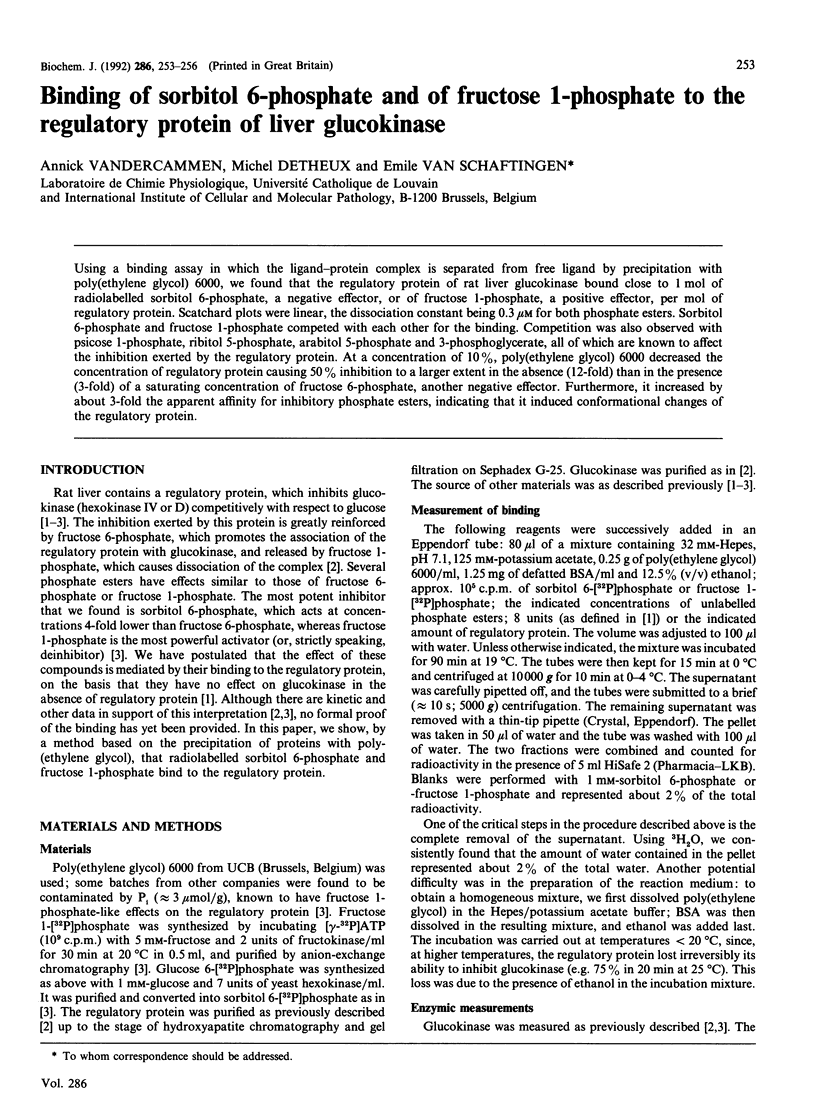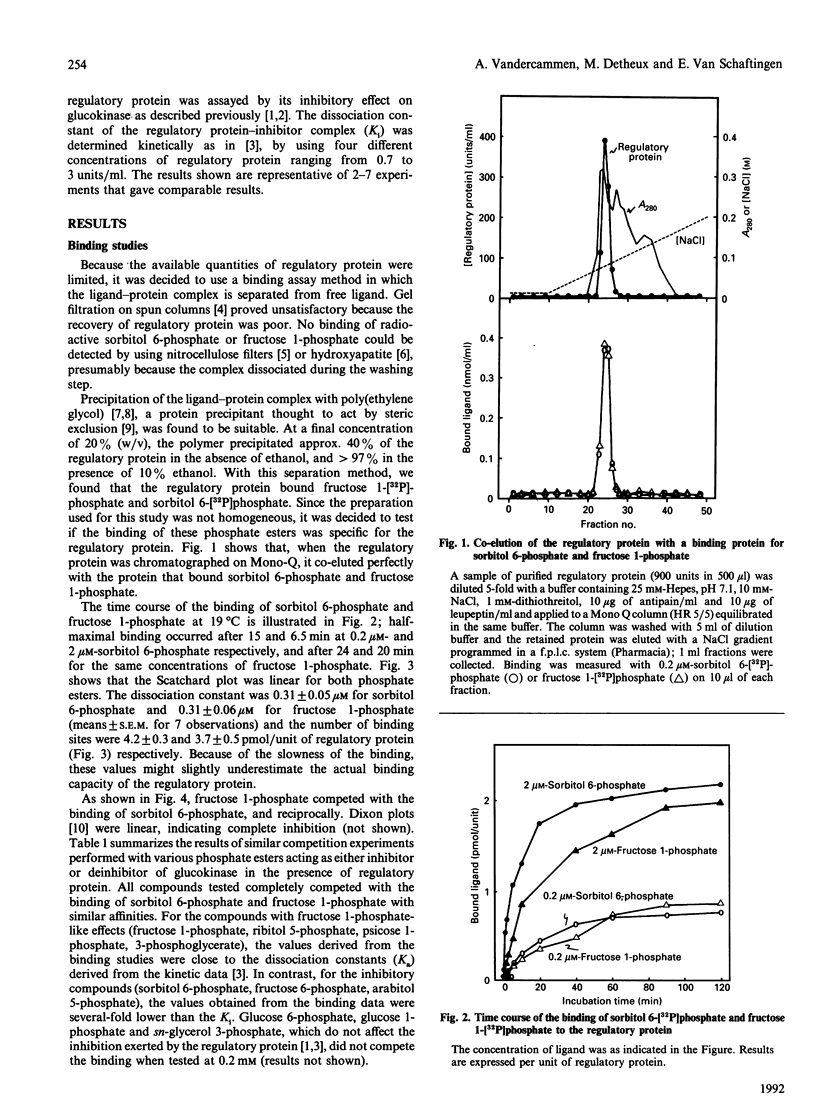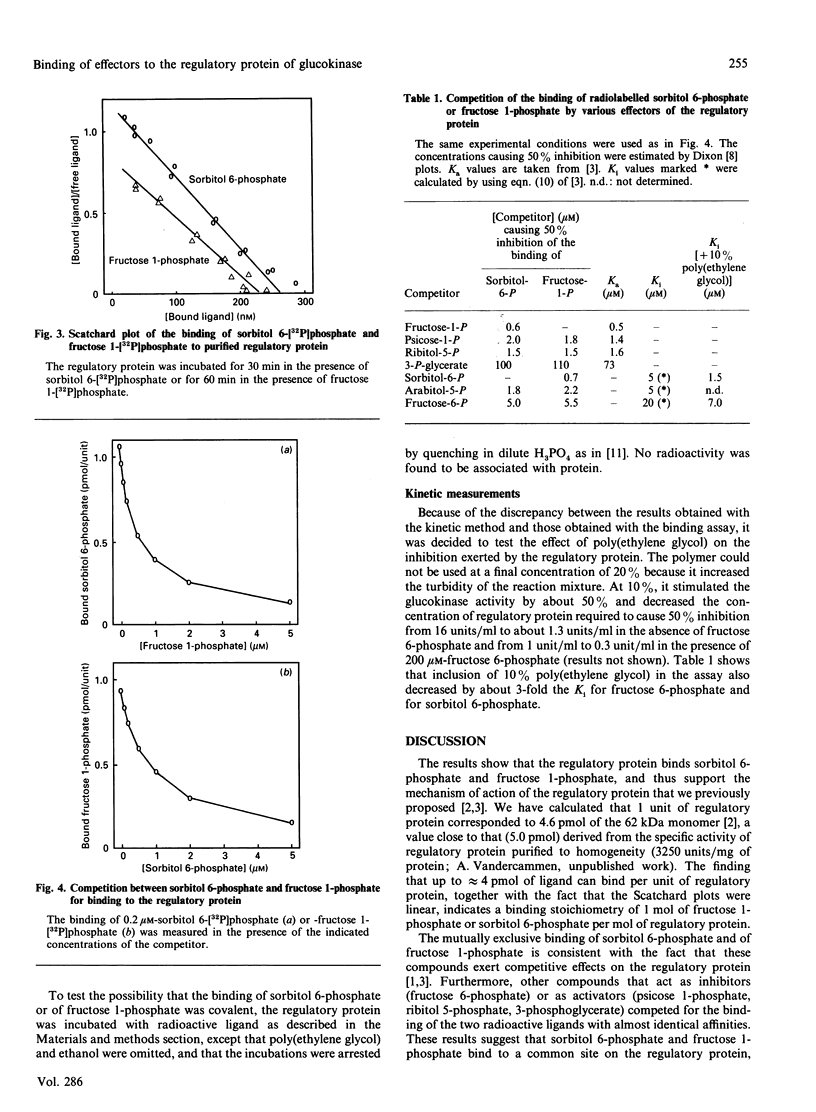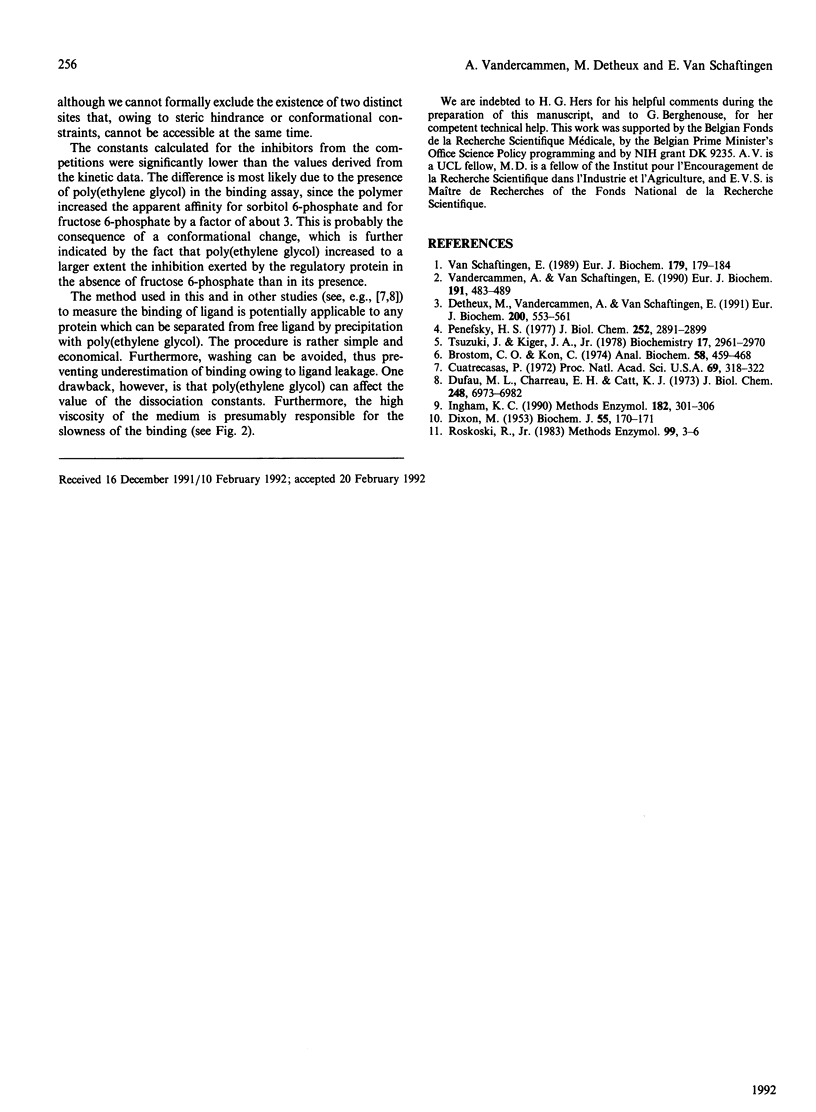Abstract
Using a binding assay in which the ligand-protein complex is separated from free ligand by precipitation with poly(ethylene glycol) 6000, we found that the regulatory protein of rat liver glucokinase bound close to 1 mol of radiolabelled sorbitol 6-phosphate, a negative effector, or of fructose 1-phosphate, a positive effector, per mol of regulatory protein. Scatchard plots were linear, the dissociation constant being 0.3 microM for both phosphate esters. Sorbitol 6-phosphate and fructose 1-phosphate competed with each other for the binding. Competition was also observed with psicose 1-phosphate, ribitol 5-phosphate, arabitol 5-phosphate and 3-phosphoglycerate, all of which are known to affect the inhibition exerted by the regulatory protein. At a concentration of 10%, poly(ethylene glycol) 6000 decreased the concentration of regulatory protein causing 50% inhibition to a larger extent in the absence (12-fold) than in the presence (3-fold) of a saturating concentration of fructose 6-phosphate, another negative effector. Furthermore, it increased by about 3-fold the apparent affinity for inhibitory phosphate esters, indicating that it induced conformational changes of the regulatory protein.
Full text
PDF



Selected References
These references are in PubMed. This may not be the complete list of references from this article.
- Brostrom C. O., Kon C. An improved protein binding assay for cyclic AMP. Anal Biochem. 1974 Apr;58(2):459–468. doi: 10.1016/0003-2697(74)90214-0. [DOI] [PubMed] [Google Scholar]
- Cuatrecasas P. Isolation of the insulin receptor of liver and fat-cell membranes (detergent-solubilized-( 125 I)insulin-polyethylene glycol precipitation-sephadex). Proc Natl Acad Sci U S A. 1972 Feb;69(2):318–322. doi: 10.1073/pnas.69.2.318. [DOI] [PMC free article] [PubMed] [Google Scholar]
- DIXON M. The determination of enzyme inhibitor constants. Biochem J. 1953 Aug;55(1):170–171. doi: 10.1042/bj0550170. [DOI] [PMC free article] [PubMed] [Google Scholar]
- Detheux M., Vandercammen A., Van Schaftingen E. Effectors of the regulatory protein acting on liver glucokinase: a kinetic investigation. Eur J Biochem. 1991 Sep 1;200(2):553–561. doi: 10.1111/j.1432-1033.1991.tb16218.x. [DOI] [PubMed] [Google Scholar]
- Dufau M. L., Charreau E. H., Catt K. J. Characteristics of a soluble gonadotropin receptor from the rat testis. J Biol Chem. 1973 Oct 25;248(20):6973–6982. [PubMed] [Google Scholar]
- Ingham K. C. Precipitation of proteins with polyethylene glycol. Methods Enzymol. 1990;182:301–306. doi: 10.1016/0076-6879(90)82025-w. [DOI] [PubMed] [Google Scholar]
- Penefsky H. S. Reversible binding of Pi by beef heart mitochondrial adenosine triphosphatase. J Biol Chem. 1977 May 10;252(9):2891–2899. [PubMed] [Google Scholar]
- Roskoski R., Jr Assays of protein kinase. Methods Enzymol. 1983;99:3–6. doi: 10.1016/0076-6879(83)99034-1. [DOI] [PubMed] [Google Scholar]
- Tsuzuki J., Kiger J. A., Jr A kinetic study of cyclic adenosine 3':5'-monophosphate binding and mode of activation of protein kinase from Drosophila melanogaster embryos. Biochemistry. 1978 Jul 25;17(15):2961–2970. doi: 10.1021/bi00608a004. [DOI] [PubMed] [Google Scholar]
- Van Schaftingen E. A protein from rat liver confers to glucokinase the property of being antagonistically regulated by fructose 6-phosphate and fructose 1-phosphate. Eur J Biochem. 1989 Jan 15;179(1):179–184. doi: 10.1111/j.1432-1033.1989.tb14538.x. [DOI] [PubMed] [Google Scholar]
- Vandercammen A., Van Schaftingen E. The mechanism by which rat liver glucokinase is inhibited by the regulatory protein. Eur J Biochem. 1990 Jul 31;191(2):483–489. doi: 10.1111/j.1432-1033.1990.tb19147.x. [DOI] [PubMed] [Google Scholar]


